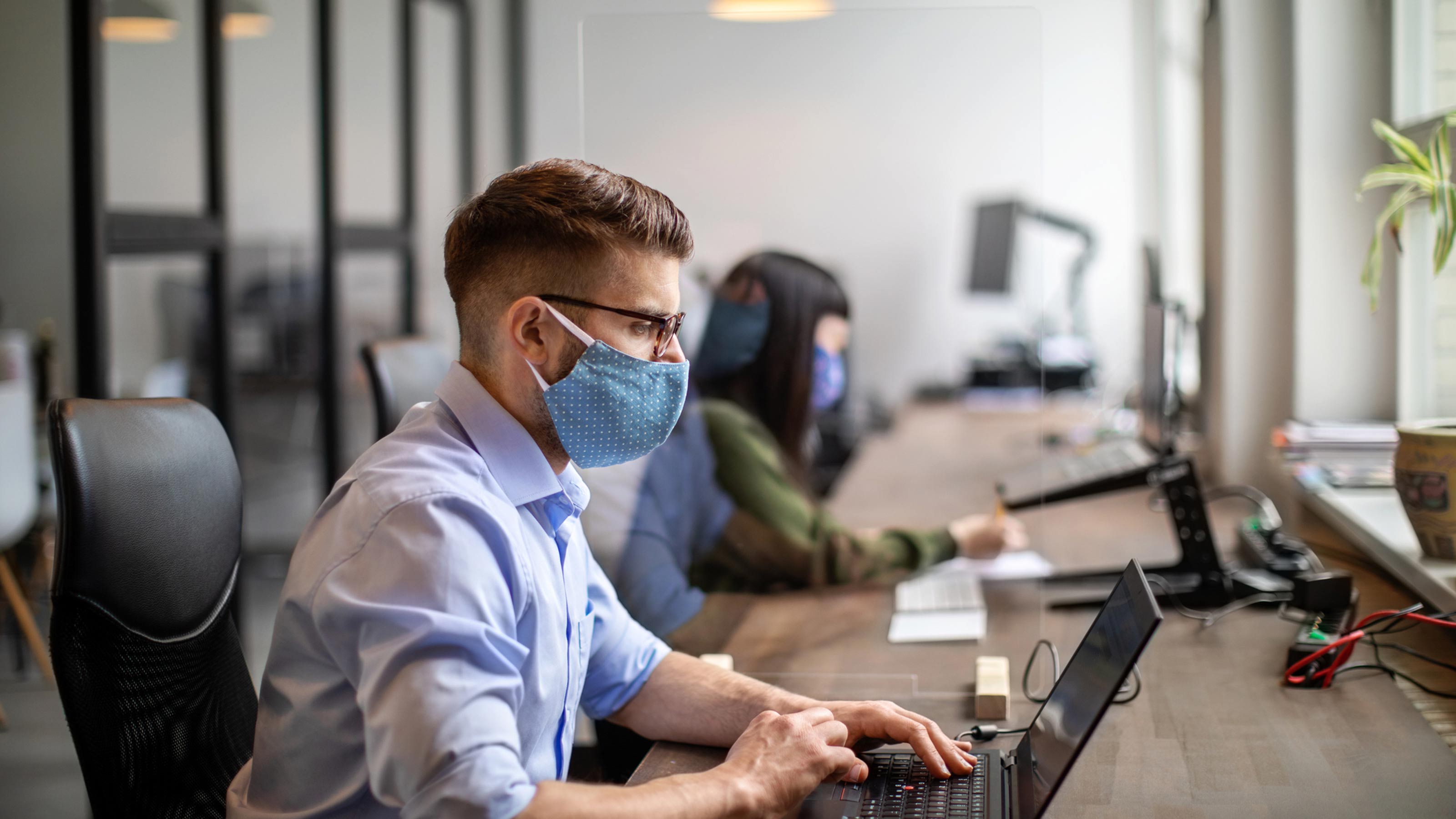Employer-Sponsored Health Coverage Costs Rising
Here's what else to expect when you get your employer's open-enrollment packet in the next month or so and how to cope with changes in your benefits.

What can I expect when I renew my health-insurance coverage through my employer during open-enrollment season this year?
You can expect prices to rise. But that's not the only change you need to watch out for. The Kaiser Family Foundation released its 2009 Employer Health Benefits study on September 15, and it provides a glimpse of what you can expect when you get your employer's open-enrollment packet in the next month or so.
| Row 0 - Cell 0 | 3 Health Insurance Mistakes to Avoid |
| Row 1 - Cell 0 | Your Path to Cheaper Insurance |
| Row 2 - Cell 0 | Get the Best Rate on Health Insurance |
The biggest news coming out of the study is that the average annual premiums for employer-sponsored health insurance topped $13,000 this year for family coverage ($13,375, to be exact), which is a 5% increase from last year's premiums. Since 1999, the average cost of family coverage has risen by 131%. The average annual premiums for single coverage rose by nearly 120% over the same period, to $4,824 in 2009.

Sign up for Kiplinger’s Free E-Newsletters
Profit and prosper with the best of expert advice on investing, taxes, retirement, personal finance and more - straight to your e-mail.
Profit and prosper with the best of expert advice - straight to your e-mail.
Employers are struggling with these rising costs, but many still feel an obligation to help cover their employees' premiums. In many cases, however, they don't feel as strong of a commitment to subsidize coverage for their employees' family members. On average, workers contribute 17% of the total premium for single coverage and 27% for family coverage. And the difference is even more pronounced at small firms (those with fewer than 200 employees). The study found that although 39% of those firms pay the all the premiums to cover their employees, 30% of the firms require employees to pay more than 50% of the premiums to cover their families.
Employers are also finding creative ways to get employees to share in the costs. In addition to boosting premiums, employers are raising deductibles and co-payments. This strategy boosts employees' costs in less-obvious ways, and it encourages employees to try to lower their own medical expenses. The study found that 22% of covered workers are now enrolled in a plan with a general annual deductible of $1,000 or more, and 40% of covered workers at small firms are enrolled in high-deductible plans.
An employee's share of the cost for prescription drugs and doctor visits has gradually increased over the past several years, too. Covered workers pay, on average, a $20 co-payment for primary care and a $28 co-pay for specialty physicians. And covered workers with coinsurance (which charges a percentage of the total cost, rather than a fixed dollar amount) pay an average of 18% of the cost of primary-care visits.
More than three-fourths of employees are now in plans that have three or more tiers of cost sharing for prescription drugs. On average, employees must pay a co-payment of $10 for generic drugs, $27 for preferred drugs and $46 for non-preferred drugs, as well as an $85 co-pay or 31% of the cost of specialty drugs.
What does all of this mean for you? Here's what to expect and what you can do to cope with these trends:
Higher premiums for dependents. It may still be cost-effective for you to remain on your employer's policy. But investigate other options for your family. If your spouse has health coverage at work, compare the cost of keeping family members on your policy with the cost of shifting them to your spouse's plan. And look into how much it would cost to buy an independent policy for your spouse and children. If they are relatively healthy and you live in a state with a competitive health-insurance marketplace (most states other than New York and New Jersey), that might be your best bet. You can get price quotes for individual insurance at eHealthInsurance.com, or find a local health insurance broker through the National Association of Health Underwriters.
Higher out-of-pocket costs. If your employer gives you several health-plan options, compare not only the premiums but also the out-of-pocket costs for the types of doctor visits and drugs you typically pay for. The plan with the lowest premium could actually cost you more, especially if you take expensive brand-name drugs. Also compare the maximum out-of-pocket expense, which is the most you'd have to pay for the year. And keep your out-of-pocket costs in mind when calculating how much money to set aside in a flexible spending account in 2010. Because your FSA contributions come out of your paycheck before income taxes and Social Security taxes, you can save 35% or more compared with spending after-tax money on these medical expenses.
Higher annual deductibles. High-deductible policies are looking a lot better than they did in the past: Some now provide free preventive and well-baby care, regardless of your deductible. Choosing a high-deductible policy can save you money in premiums and may qualify you to contribute pretax money to a health savings account. More employers are trying to lower their own costs by steering employees toward high-deductible policies -- they're making the premiums attractive and contributing some money to their employees' HSAs. You can add money to the account, too, to build up a stash of tax-free money that you can use for future medical expenses in any year and take with you if you leave your job.
And if you do have a high-deductible policy, any steps you can take to lower your medical expenses will save you money. Make the most of online tools to compare the cost of prescription drugs with generic or other lower-cost alternatives. Your employer or insurer may offer these Web-based tools, or you can visit DestinationRx.com and use the "My Medicine Cabinet" feature. Also think carefully about where you receive your care. Emergency-room visits tend to cost $300 to $1,000, compared with $150 at an urgent-care center and $65 to $75 at a doctor's office. For some routine visits, a convenience-care clinic, such as CVS's MinuteClinic, may make sense. For non-emergencies, call your insurer's 24-hour advice hotline.
Get Kiplinger Today newsletter — free
Profit and prosper with the best of Kiplinger's advice on investing, taxes, retirement, personal finance and much more. Delivered daily. Enter your email in the box and click Sign Me Up.

As the "Ask Kim" columnist for Kiplinger's Personal Finance, Lankford receives hundreds of personal finance questions from readers every month. She is the author of Rescue Your Financial Life (McGraw-Hill, 2003), The Insurance Maze: How You Can Save Money on Insurance -- and Still Get the Coverage You Need (Kaplan, 2006), Kiplinger's Ask Kim for Money Smart Solutions (Kaplan, 2007) and The Kiplinger/BBB Personal Finance Guide for Military Families. She is frequently featured as a financial expert on television and radio, including NBC's Today Show, CNN, CNBC and National Public Radio.
-
 Stock Market Today: Stocks Gain on Tech, Auto Tariff Talk
Stock Market Today: Stocks Gain on Tech, Auto Tariff TalkThe Trump administration said late Friday that it will temporarily halt tariffs on some Chinese tech imports.
By Karee Venema Published
-
 Sam's Club Plans Aggressive Expansion: Discover Its New Locations
Sam's Club Plans Aggressive Expansion: Discover Its New LocationsSam's Club expansion plans will open up to 15 new stores each year. Learn where they plan to open in 2025.
By Sean Jackson Published
-
 You May Get a Raise in 2022
You May Get a Raise in 2022Employee Benefits In a strengthening labor market, businesses are paying more to attract and retain employees.
By Emma Patch Published
-
 Before You Sign Up for Health Insurance at Work, Read This
Before You Sign Up for Health Insurance at Work, Read ThisEmployee Benefits It’s open enrollment time at workplaces across the country – for health insurance as well as a bevy of other benefits. Here are four tips to help navigate the maze of benefit decisions.
By Rob Grubka, Fellow in the Society of Actuaries Published
-
 Open Enrollment Brings New Employee Perks (for a Price)
Open Enrollment Brings New Employee Perks (for a Price)Employee Benefits The pandemic and an increasingly diverse workforce have led to more benefits options for workers.
By Michael Korsh Published
-
 Can Your Boss Make You Go Back to Work?
Can Your Boss Make You Go Back to Work?Coronavirus and Your Money Even if you don’t have legal protections, you may be able to negotiate with your boss.
By Sandra Block Published
-
 This Olympian Tackles the Wealth Gap
This Olympian Tackles the Wealth GapFinancial Planning She encourages advisers to introduce students to financial planning.
By Rivan V. Stinson Published
-
 Seasonal Hirings to Hit a Record High
Seasonal Hirings to Hit a Record Highbusiness If you want to earn some extra cash for the holidays, you’ll have a better chance than ever of landing a temporary job as retailers and delivery companies announce a record number of seasonal hires.
By Kimberly Lankford Published
-
 Paying IRA Investment Management Fees
Paying IRA Investment Management Feesmanagement New tax law brings big changes. But there are workarounds.
By Kimberly Lankford Published
-
 How Much Are Those Old Baseball Cards Worth?
How Much Are Those Old Baseball Cards Worth?business Depending on the year, condition and, of course, the player, some baseball cards could be worth thousands of dollars.
By Kimberly Lankford Published